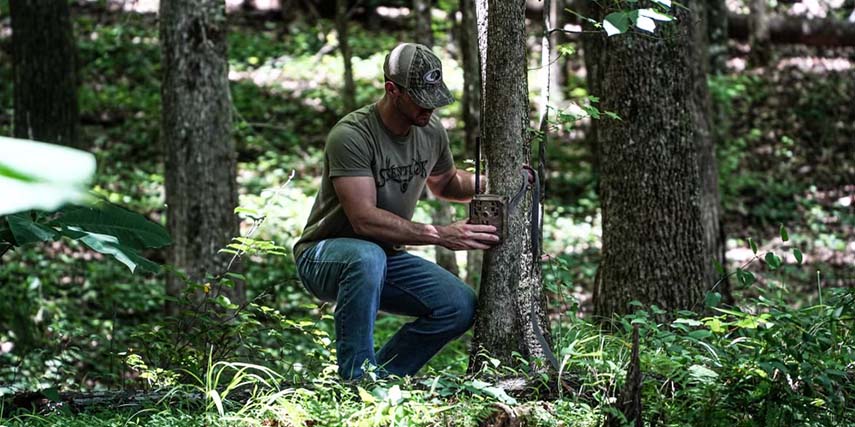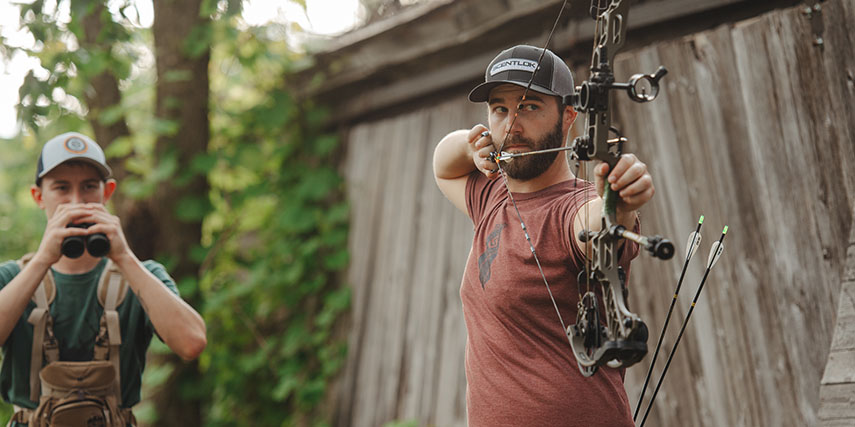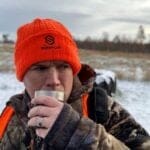As the first signs of new antler growth begin in the late spring and early summer, hunters’ minds fill with picturesque cool fall mornings sitting in a tree.
In June, whitetail bucks have been noted to gain a quarter inch or more of antler growth daily. Even though it is a three to four-month wait until the opening of hunting season, it doesn’t take long until hunters have pinpointed their hit list bucks for the upcoming year.
Some may think that June is too early to judge the size of a buck’s antlers, yet that may not be the case with many mature bucks. One-and-a-half to two-year-old bucks can gain as much as ¾ of an inch per week. And mature bucks can grow up to 1 ½” weekly. With such rapid growth, it doesn’t take long for hunters to single out the bucks that are subject to be harvested during the fall season.
As July arrives, the mature bucks are now growing bone at an exploding rate as substantial as over 1” per day. During this time, hunters must prepare for the season by doing everything they can to ensure that this fall will be their best hunting season yet.
Game Cameras, Green Fields, And Food!
The most popular method of scouting for many deer hunters is by using game cameras. As bucks begin to reach their total growth of antlers, it is common to use an array of game cameras to take inventory and observe the current year’s growth compared to the previous season.
A whitetail’s summer pattern is easy to predict. They eat through the night and early mornings and travel to their bedding areas during the day when temperatures reach highs in the nineties and even one-hundreds. As the evening cools, deer return to their food and water source. The summer travel patterns typically stay the same until the end of August or through much of September, depending on which part of the country you are hunting.
With more predictable travel patterns during the summer, hunters can typically place their trail cameras over a green food source, watering holes, or near a feeder or supplemental feeding site to capture pictures of all the different bucks in the area. Green food plots offer deer a high-water content, which is hugely needed during the warmer months, and supplemental feeding helps provide deer with a higher protein diet that is great for increased antler growth each year. Then, of course, many hunters have mineral sites during the summer that provide calcium and phosphorus, which are also essential in antler growth and overall better health for deer.

Food Plots
As mentioned earlier, a green food plot is an excellent source of water for deer, not to mention the health benefits deer receive by eating green summer forage. This forage is full of protein crucial for antler development, milk production, quality, and fawn growth, and it ensures that deer are as healthy as can be when fall arrives.
Because a lush green food plot is one of a whitetail deer’s favorite hangouts during the summer, it is no surprise that these same fields become the ideal locations to capitalize on an early-season buck during the first weeks of hunting season.
To ensure you are not too late, hunters should begin planting food plots during the spring to provide deer with nutrition as antlers are growing and does are dropping fawns. However, if one is late to the plot planting party, they still have time to plant them in July and August, arguably the best time for food plots because weeds are dying, and moisture is increasing. The goal is to provide as much food and nutrition for deer as possible throughout the majority of fall until colder temperatures arrive.
Practice, Practice
Once the deer have been cared for by providing extra food and nutrition, it is time to begin using the data from game cameras and establishing a plan for the hunting season. Yet, one of the most critical steps in preparation should not be overlooked. Hunters must take time out of their busy schedules to practice shooting.
For many hunters, a crucial part of their nightly summer routine involves shooting their bows and practicing for the upcoming season. Shooting a few arrows three to four nights a week throughout the summer improves accuracy and helps hunters make more deadly shots. Plus, increased practice builds confidence in a hunter’s shooting ability which can also result in a higher success rate when it is time to sit in a blind or treestand during the fall.


